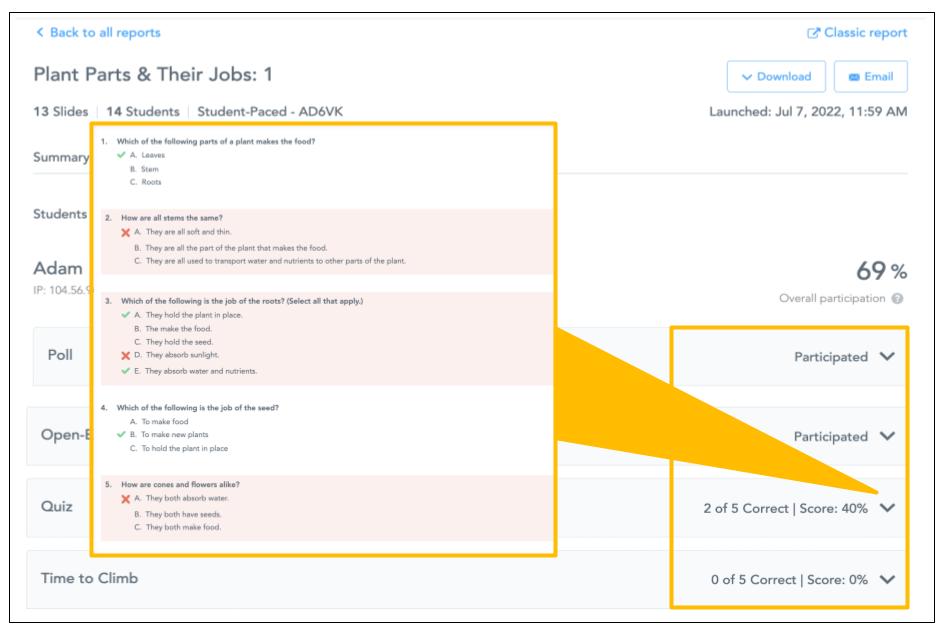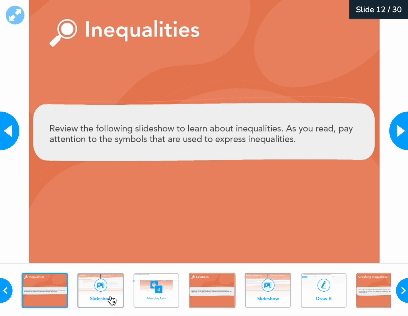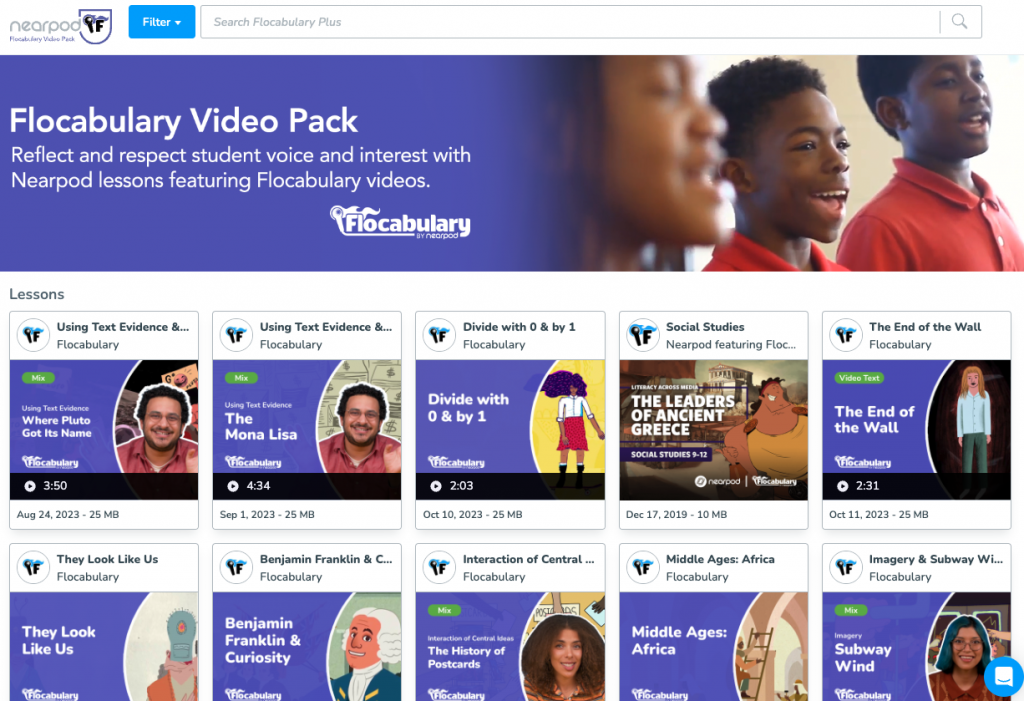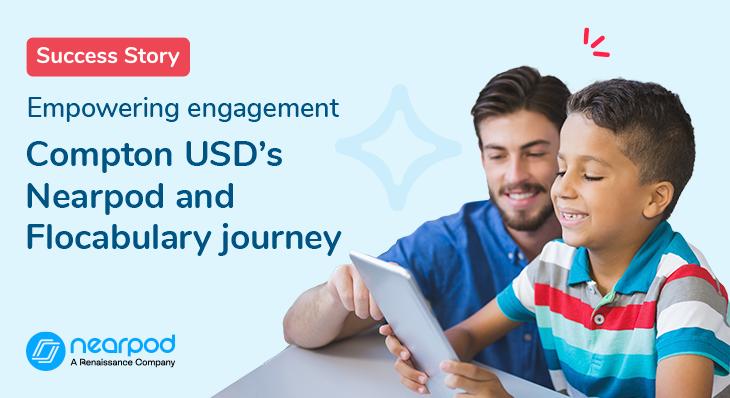
Empowering engagement in Compton Unified School District: Nearpod and Flocabulary’s impact
In 2020, the Compton Unified School District (CUSD), serving more than 20,000 students, had undergone a huge transformation, with a marked increase in student achievement topping the statewide average and with graduation rates reaching close to 90%. However, like many schools, CUSD was unaware of the radical shift it would need to keep its students engaged, participating, and progressing over the next few years during the COVID-19 school shutdown and then the return to in-person learning. Yet, four years later, Compton Unified School District has become a model of perseverance by doubling down on its efforts to use Nearpod and Flocabulary to reengage its student population and continue its upward trends of student academic achievement and graduation rates.
Empowering engagement in Compton Unified School District’s: Nearpod and Flocabulary’s impact
Challenge
Before the school shutdowns mandated by the COVID-19 pandemic, Compton Unified School District was on an upward trend when it came to school improvements and student outcomes. Many obstacles challenge those who teach a student population that is more than 76% low-income and more than a quarter of English language learners (ELLs); now, throw the catastrophic wrench of a global pandemic with school closures into the mix, and post-pandemic, there was more than just “disruption.” Nationwide reports summarized the estimated widespread learning loss, with the Los Angeles Times underscoring a great discrepancy for Black, Hispanic, and other “vulnerable” children already impacted by inequalities.
“[Well, first, let’s look at chronic absenteeism. You cannot get to good scores if the kids aren’t in school. So what drives kids to go to school and then what drives them to look to not be suspended or not be in trouble… That is the engagement piece. So a lot of people think, ‘Oh, my God! We’ve got to get our math and ELA scores up’ where I believe that before you can get scores up, you have to give kids a reason to come to school. So when you’re thinking about, why do kids come to school, or why don’t they come to school? And it really comes to a lack of engagement and the lack of relevancy…]”
Michele Dawson, Compton Unified School District’s Senior Director of Innovation and Technology
Solution: Nearpod
When the pandemic struck, CUSD quickly pivoted to shore up its tech infrastructure, recognizing that it was going to have to focus on resource choice and teacher training to provide a 1:1 solution. The district had an ambitious goal to provide all educators with 100% of the resources and all students with 100% of the learning tools they needed. Nearpod became one of the two main web-based supports for their English language learners (ELLs), which meant that they could increase the amount of learning services students were receiving daily.
CUSD developed its award-winning distance learning platform to encourage teachers to integrate these powerful services across the curriculum by modifying their pacing guides to ensure continuity of learning. Yet by March 2021, less than 25% of its student population had returned to in-person schooling. By the fall and winter of 2022, CUSD realized that it needed to offer a hybrid model to meet the in-person needs of its high-priority populations, such as the homeless, special needs, and ELL students, by rotating small cohorts of students attending on alternate days.
“More than 80% of the students who took our end-of-year survey felt that their lessons became more engaging as they moved through the year. 84% of the English-speaking parents and 78% of the Spanish-speaking parents who completed the survey also saw improvement or significant improvement in the quality of the lessons their students received in comparison to last school year.”
Annual Update for the 2020–21 Learning Continuity and Attendance Plan
Decision makers in Compton were introduced to Nearpod founders Guido Kovalskys and Sebastian Feldman back in 2012, and CUSD was intrigued by Nearpod’s large library of content, ease of use, formative assessment activities, and real-time data collection—all of which hold the promise of improving student outcomes. In an attempt to be more tech-forward to increase personalization and thus engagement, CUSD wanted an approach that reached beyond slide decks and paper-based activities.
During the pandemic, CUSD recognized the learning curve and immediately focused on teacher training to make the most out of its Nearpod School and District account, Nearpod English Learners (EL), and Flocabulary platforms. CUSD built platform use into its pacing guides to weave the content and instructional tools across the curriculum. Nearpod’s and Flocabulary’s reports also made it easier to share student success stories with their homes and build stronger relationships between staff and caregivers.
Just take a look at the California School Dashboard, and you can see evidence of CUSD’s long-term commitment to not only pushing through but escalating the rigor and dedication to inclusivity to ensure that all their students succeed day in and day out, with continued improvements in student engagement, achievement, and attendance year over year.
At a glance
Compton views Nearpod and Flocabulary as inclusive, student-centered tools that promote student interest and engagement across the curriculum, most notably in ELA, social studies, math, and science. With multiple points of entry, multiple checks for understanding, and multiple opportunities to provide feedback, English-language learners benefit from the concrete and tangible points of connection and real-world application. CUSD’s teachers appreciate the platforms’ applicability to all students, as adjustments can be made, reteaching can occur, and small groups can be addressed thanks to Nearpod’s and Flocabulary’s built-in scaffolding. Teachers can intervene right in the moment and provide immediate feedback.
Michele Dawson, a nine-year veteran educator with the Compton Unified School District as Senior Director of Innovation and Technology, describes how CUSD has shifted from a mindset around edtech adoption to one of innovation so that its students will not only be consumers of technology but also producers with technology who can meet future job market demands.
“You need to be able to know where your audiences are—are they engaged? And are they understanding the concepts that you’re doing? When I first saw Nearpod, I understood the power of that, and that’s why I jumped on the bandwagon.”
Michele Dawson
An appeal for Flocabulary
The increasing adoption of Flocabulary resulted directly from educators requesting access to the platform. Given the increased engagement observed with students using Nearpod, teachers requested Flocabulary, especially with their ELL students in mind. In Compton’s elementary schools, CUSD has a three-station rotation model during a 90-minute ELA block, with one station dedicated solely to Flocabulary use. At the secondary level, teachers use Flocabulary as a whole-group and small-group instruction tool.
Jennifer Graziano, Senior Director of English Learner Services, speaks to Flocabulary’s use of music, rhythm, and rigor to engage students. In addition to focusing on vocabulary and grammar, she speaks about how these skills ladder up and align with Common Core Standards and cross-curricular applicability. She describes how instrumental the training has been, with specific training in Flocabulary to provide best practices for instructional support for bilingual instructional assistants in their dual-language and newcomer classes.
“I found [Flocabulary] to be engaging because I believe sometimes with English language development, there’s a thought that it’s something that has to be in isolation or something that has to be taught in a certain way. But I do believe in teaching, you know, language development through the arts, and so I believe that’s what caught my attention because I believe that we have to be more innovative in how we teach English language development to make it more relevant to the students.”
Jennifer Graziano
Graziano highlights walking into classrooms where students ask to use Flocabulary—even with limited knowledge of English—and are authentically engaged, which is an ongoing challenge for any educator. She emphasizes that the qualitative data gathered during walkthroughs is just as valuable as the quantitative data obtained from the daily and weekly student reports. Educators can not only monitor progress but also plan ahead and modify instruction accordingly in a continuous manner.
“We focus on academic vocabulary, and so [we are] trying to find innovative ways to to teach academic vocabulary because teaching academic vocabulary can be very mundane at times. And so part of it was trying to find a way to engage students, especially our students that have different learning styles and learning needs.”
Jennifer Graziano
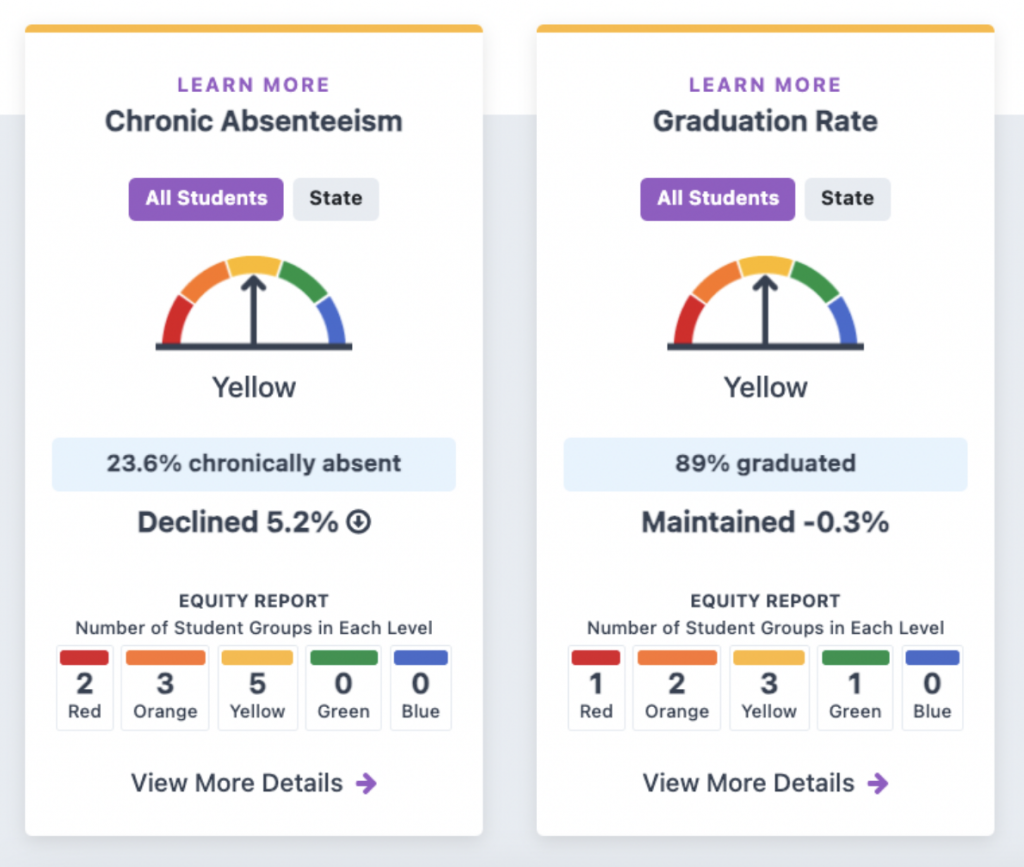
Results
Year over year, usage of Nearpod and Flocabulary has grown, with almost 300,000 activities launched last year alone. Through its local climate survey, CUSD has shown increased student engagement and support, with 79% of fifth graders feeling academically motivated. While the numbers do decline for older students, CUSD is still on an upward trajectory, with 63% of upper-grade students feeling academically motivated. With more than 25% of the student body being English learners, Compton’s data indicates that about 48% are making progress toward English language proficiency. Chronic absenteeism has fallen, and 89% of students are graduating high school.
Dawson commends how Nearpod and Flocabulary, positioned as supplemental resources to complement the core curriculum, easily align to Common Core standards. With a focus on internal training and customer support, Compton has seen bolstered adoption, which now peaks at 36 out of 37 school sites actively using Nearpod and Flocabulary; more than half of that usage is from students engaged with the premium activities that support their video watching.
“You’re not able to ascertain where your students are at until you get a chance to look at that data, and by then it’s usually too late. And the kids don’t really care. They’ve already been there, done that. But you know with Nearpod, you can always check for understanding, look at where students are at, develop your small group instruction, your interventions, [use] the data, and students get immediate feedback so they know where their mistakes are. They can go back. You can reteach if the whole class needs to.”
Michele Dawson
In addition to the wealth of quantitative data, CUSD includes Flocabulary’s Lyric Lab in its annual Steam Fest. When an unprecedented hurricane threatened to strike Los Angeles County in 2023, teachers turned to Nearpod and used Virtual Reality (VR) field trips to see what a hurricane and its possible disruption might look like—the old education adage of SHOW, don’t tell.
Empowering engagement with Nearpod and Flocabulary
Compton Unified School District has seen the impact that Nearpod and Flocabulary are making on teachers and students across the district, as it authentically reengages all learners through rhythm and rigor in a way that enables students to see their own identities reflected and to learn about the identities of others. Both platforms meet the rigorous demands of ensuring that students are motivated to think creatively, critically, and curiously. With instructional solutions like Nearpod and Flocabulary, Compton Unified School District, one of Digital Promise’s League of Innovative School model members since 2016, has set a course for continued improvement and engagement so that its students—all of its students—will not just meet but surpass district and state goals.
Foster a love of learning in every student with Nearpod. Teachers can sign up for free below to access and create interactive lessons. Administrators can schedule a call with an expert to unlock the full power of Nearpod for schools and districts.

Nearpod’s award-winning platform is used by thousands of schools around the globe, transforming classroom engagement.

